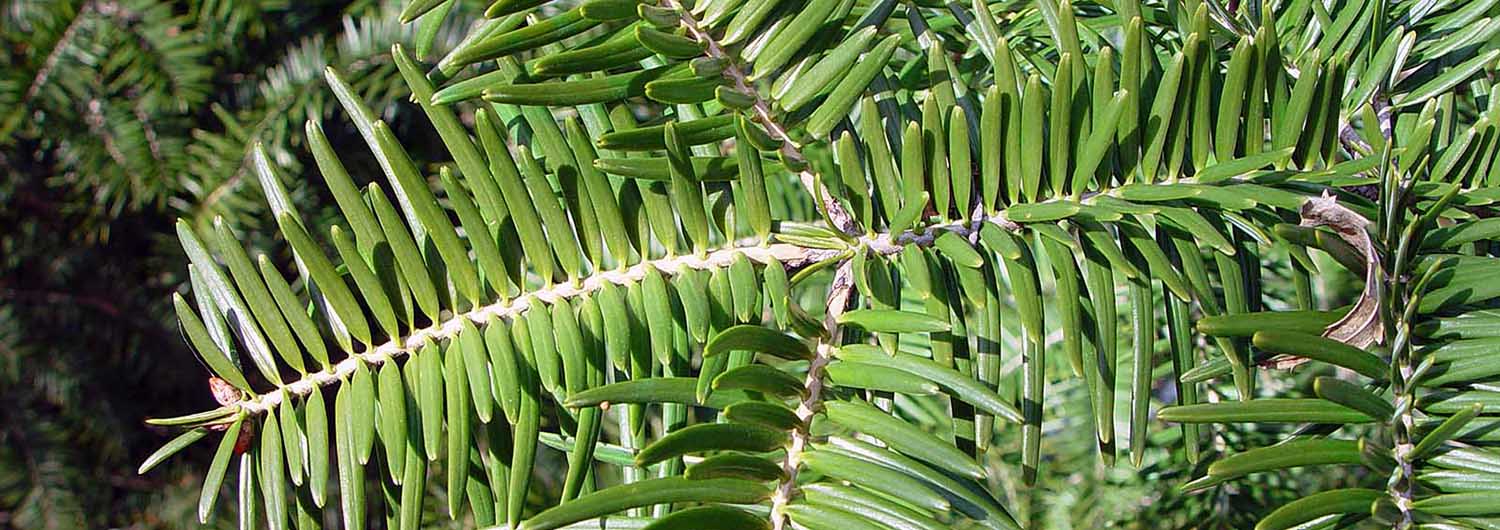Abies firma
Momi fir
When speaking of firs in the South, one usually imagines mountains with beautiful vistas, covered with the deep green, softly beautiful foliage of the balsam and Fraser firs, Abies balsamea and Abies fraseri. Indeed, the firs of the mountains are striking and wonderful plants in the cooler areas of the Southeast. However, they are not well adapted to the Piedmont and coastal areas and generally die out in these landscapes from root rot or related disorders. This does not mean that gardeners in the hotter regions of the Southeast must suffer through gardening without any firs at all. There is a fir which will thrive and grow into a magnificent specimen, even in the hot, wet climate of the southeastern Piedmont.
Abies firma, Japanese or Momi fir, is native to Japan where it is the tallest and most arresting fir in its native habitat, eventually reaching 150'. In cultivation, it will probably reach anywhere from 20'–50' in height with age, but it is rather slow growing. Foliage is light, emerald green, and more stiffly erect and sharply edged than most firs. The ends of the short, flattened needles are distinctly pointed like diminutive sabers. This tree's habit is conical with somewhat open branching. Bark is a handsome light gray. The yellow-green cones mature to a light tan and may reach 5" in length. Interestingly, the cones are borne upright on the branches, as they are on all firs and true cedars (Cedrus spp.). No named cultivars are currently available but the species can be found with a bit of searching. Japanese fir is not quite as cold hardy as other firs but it should be reliably hardy throughout most of the Southeast. It may suffer some die back in severe mountain winters but there are more appropriate choices of firs for mountain climates available.
Japanese fir is an excellent way to introduce the beauty of a fir to Piedmont gardens. The name firma means "strong" and this is indeed a tough plant. It performs well in heavy clay soils and is tolerant of a range of moisture conditions. This fir will continue growing through the 80°F nights of southeastern summers and mature into a large and handsome tree where other firs, like the popular balsam or northern white Fir (Abies concolor) will soon die. Japanese fir is especially tolerant of the Piedmont's hot, wet summer. It requires full sun and adequate moisture to prosper. Its best to give it the most optimal drainage available on your site but don't hesitate to plant this tree if heavy clay is the only soil in your garden. Like all pine relatives, Japanese fir is difficult to propagate vegetatively and must be grafted onto seedling rootstock. The species is propagated from seed and is very slow to develop to a size large enough for planting out in the landscape. This makes Japanese fir less common in the nursery industry but it is well worth the hunt.
Japanese fir is a striking tree combining the stately elegance of firs with good adaptability to the demanding conditions of southeastern Piedmont climates. It is an exceptional choice for bringing dramatic structure and beauty to gardens in the southeastern United States. At the NCSU Arboretum, a Japanese fir thrives in the heavy soil of the West Arboretum, just west of the Japanese Garden. Walk west to see the beauty of this fir in the Piedmont landscape.

